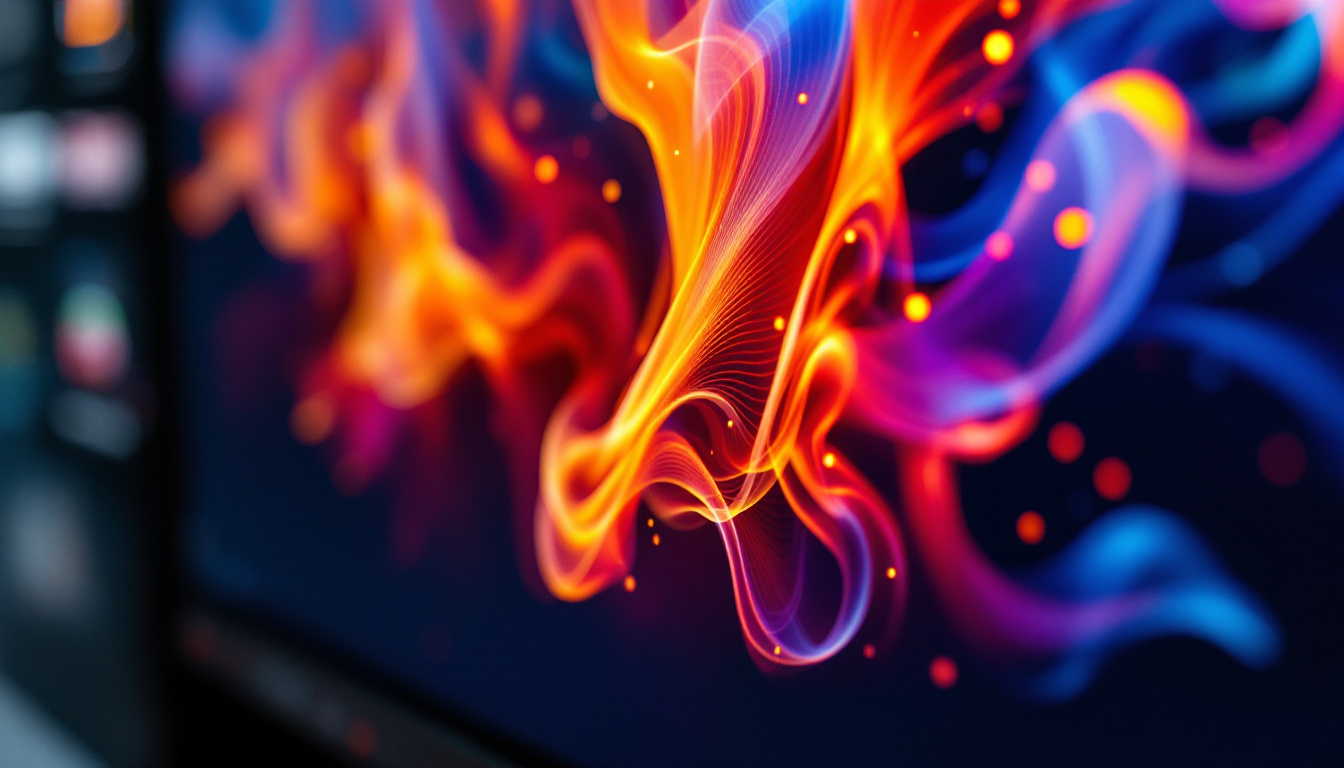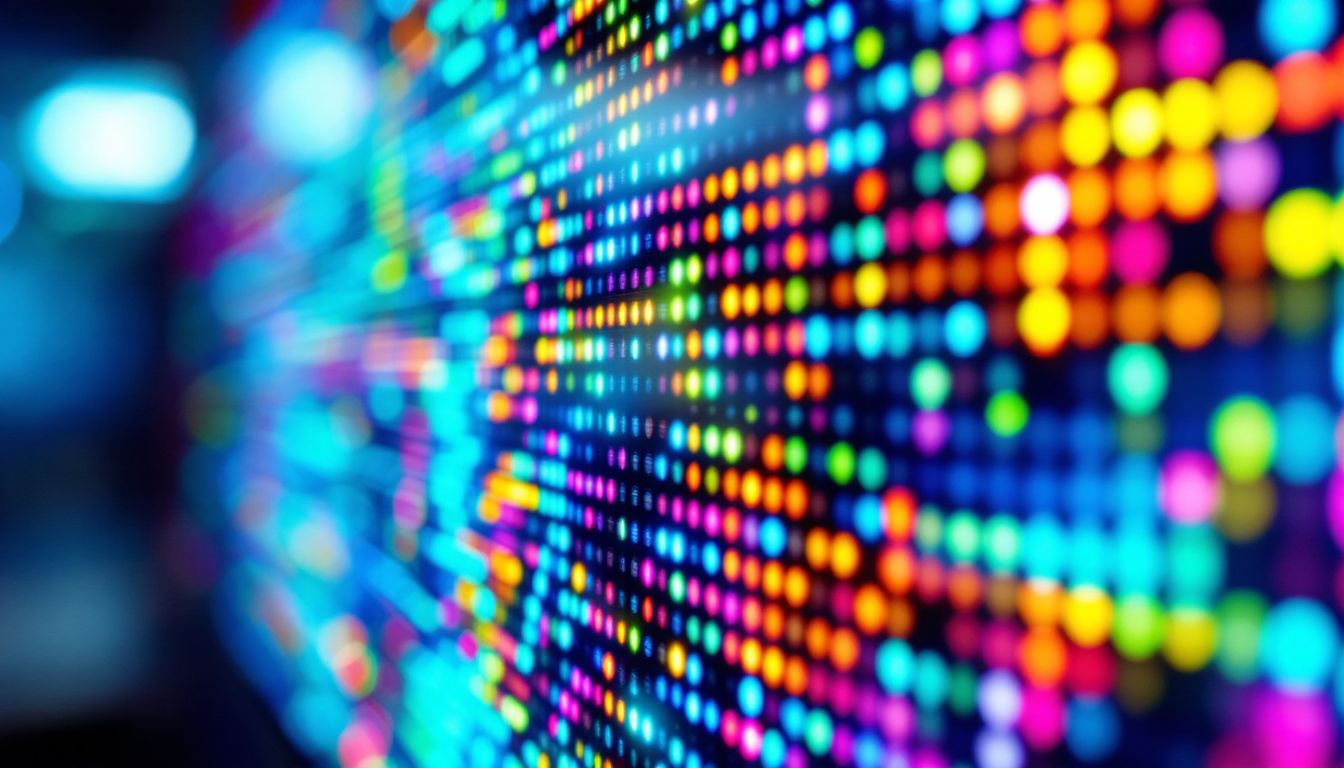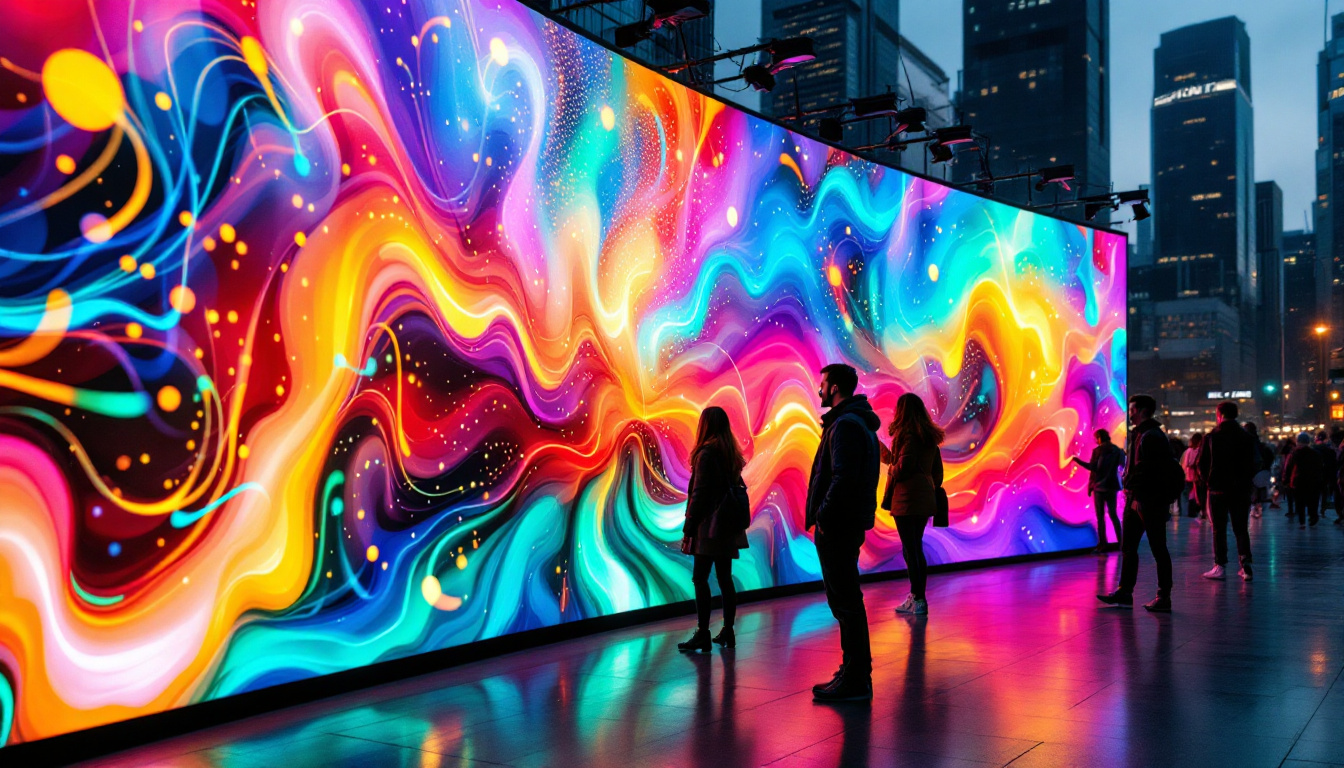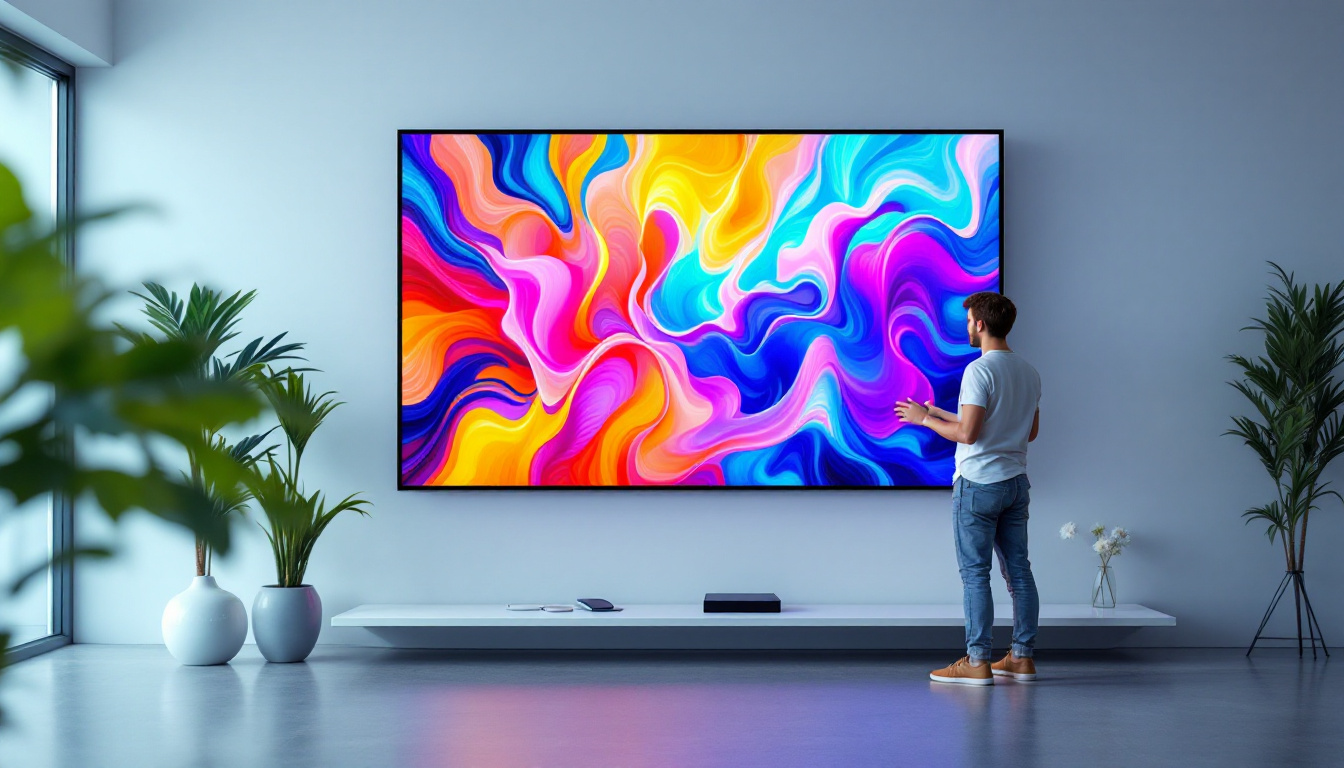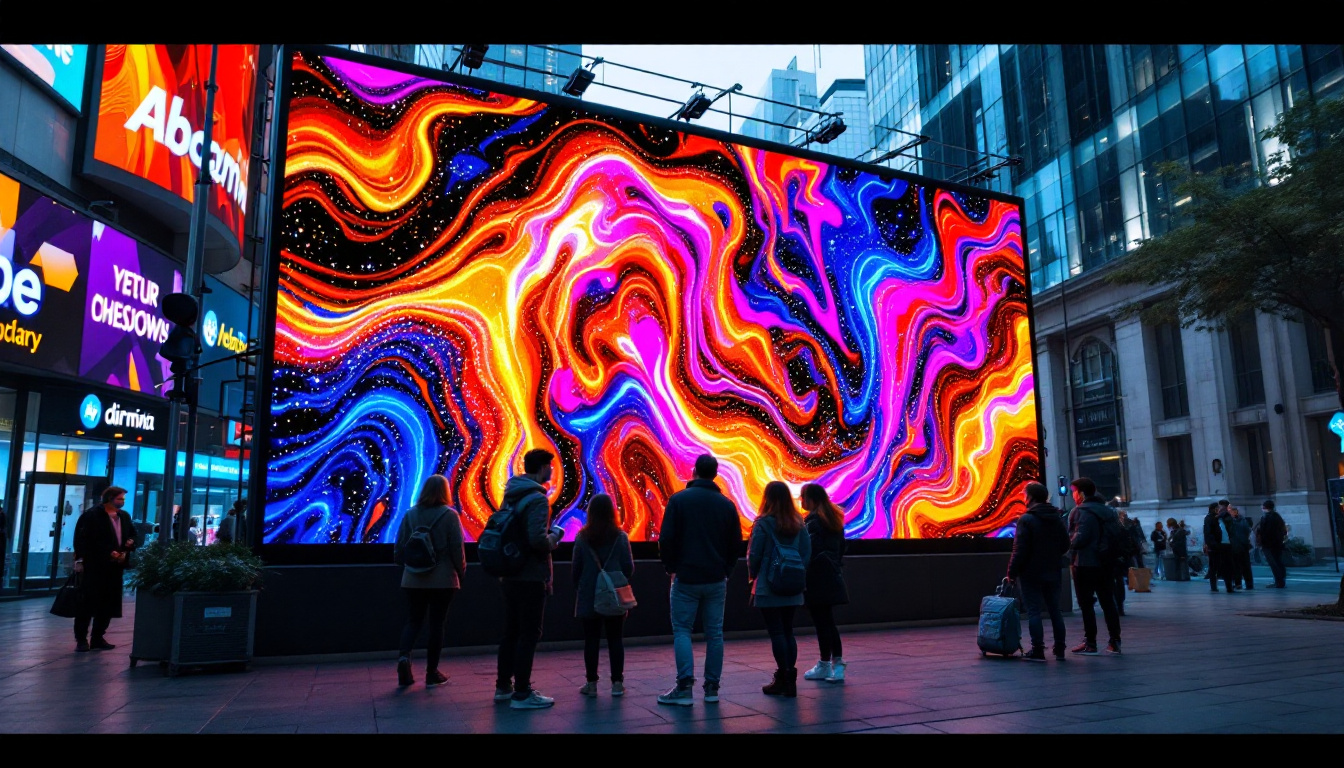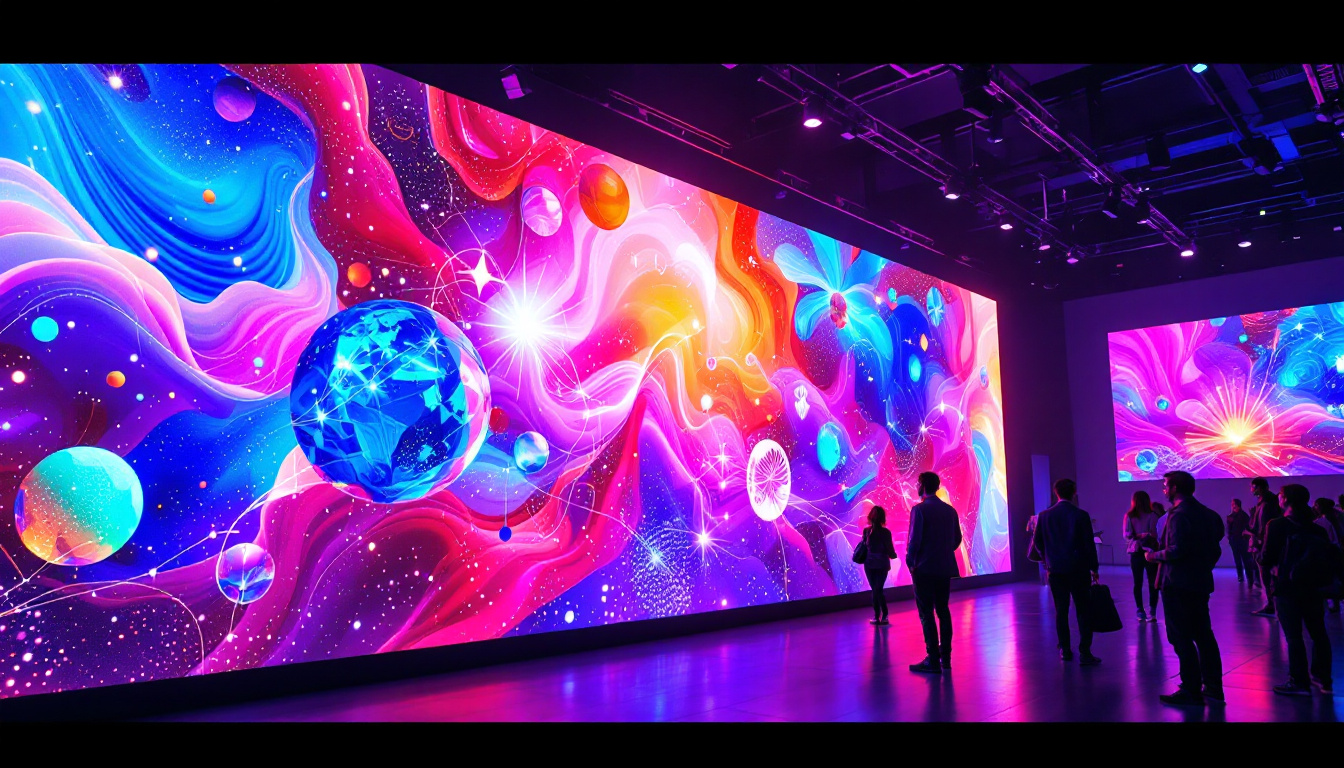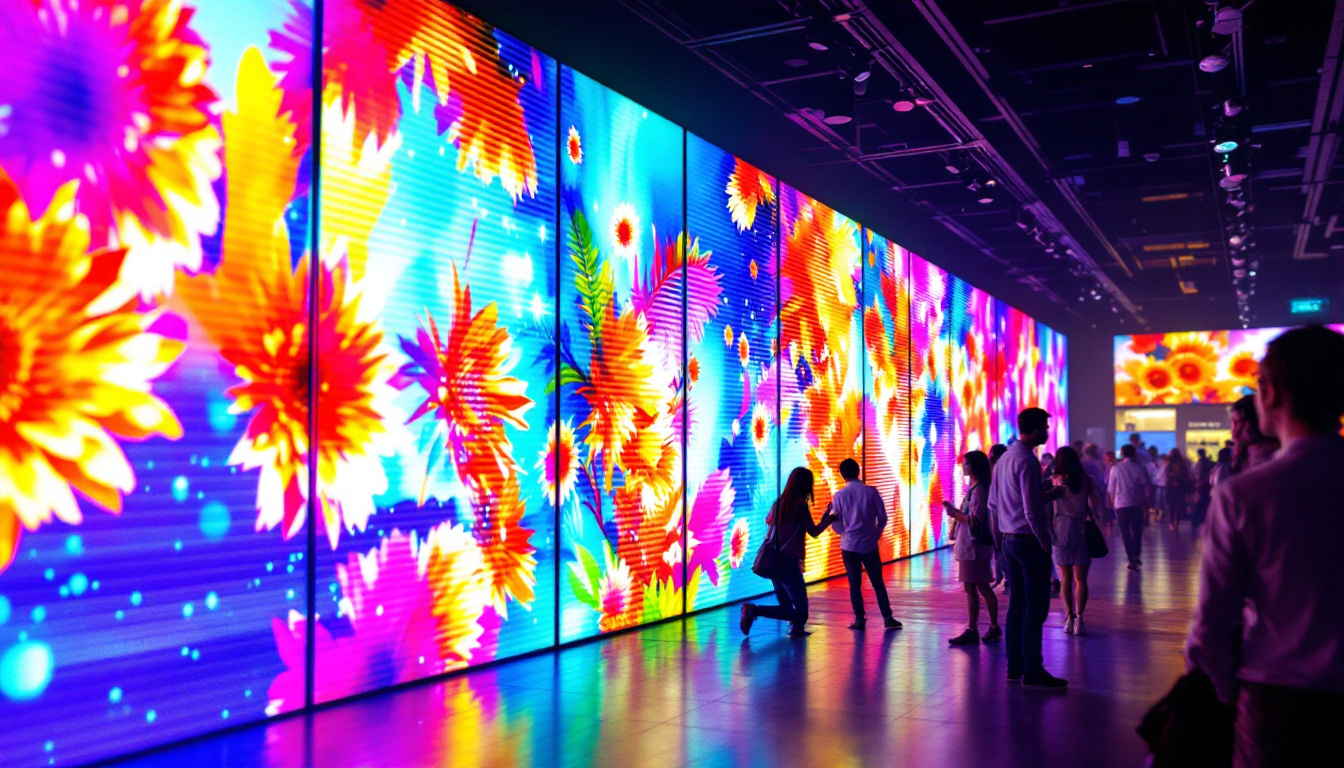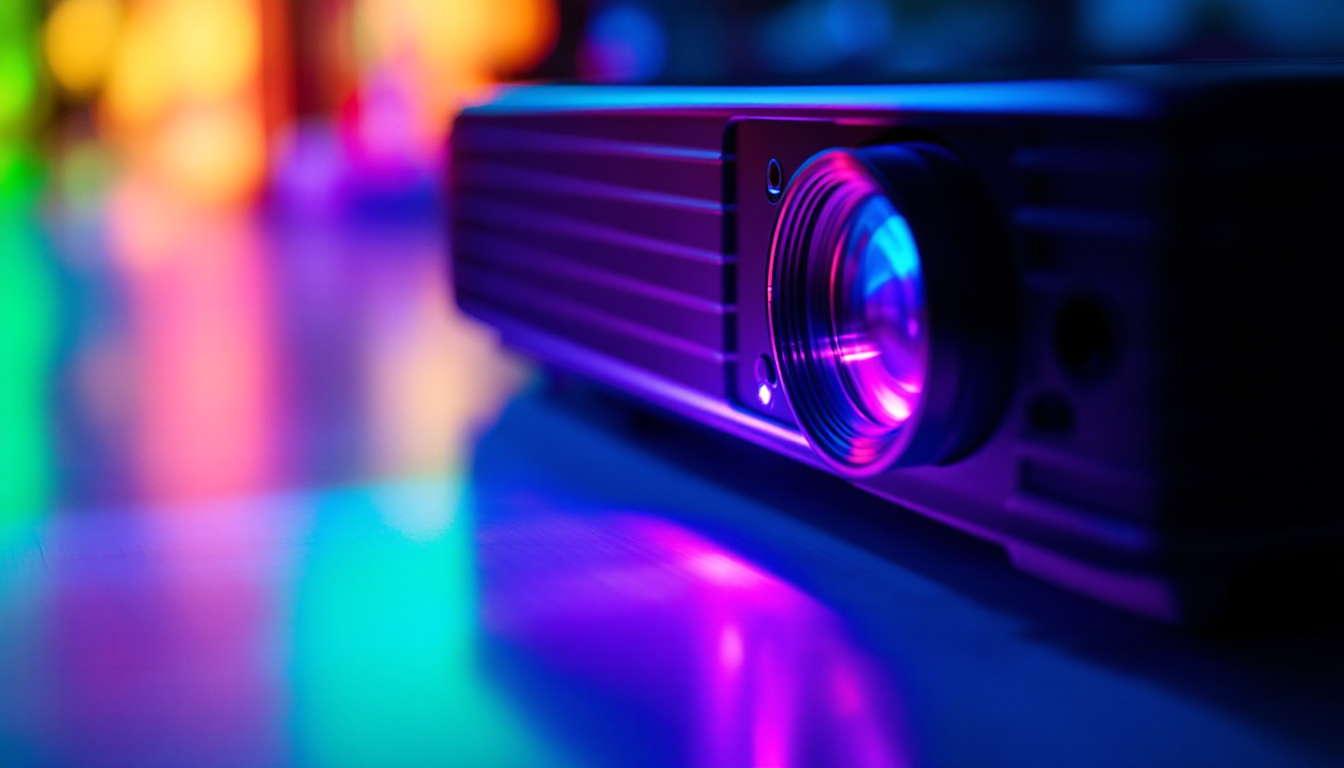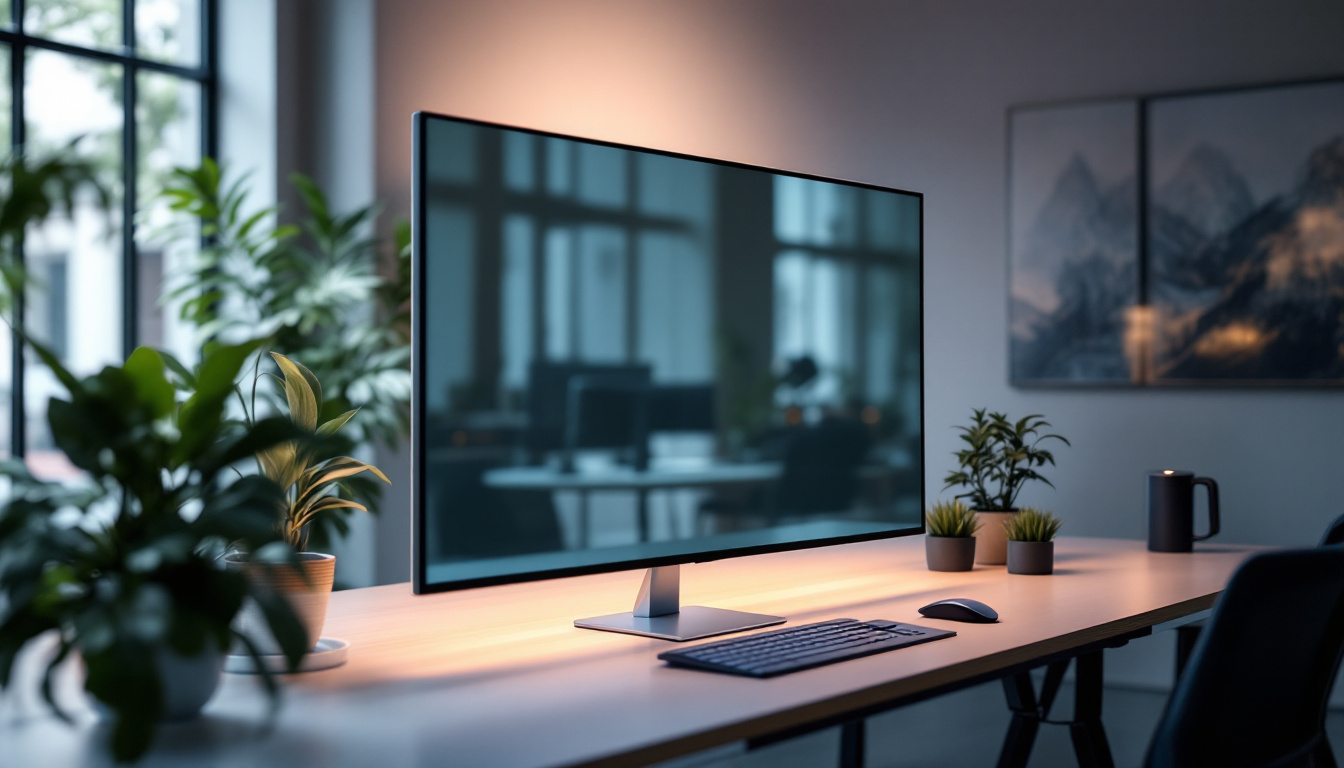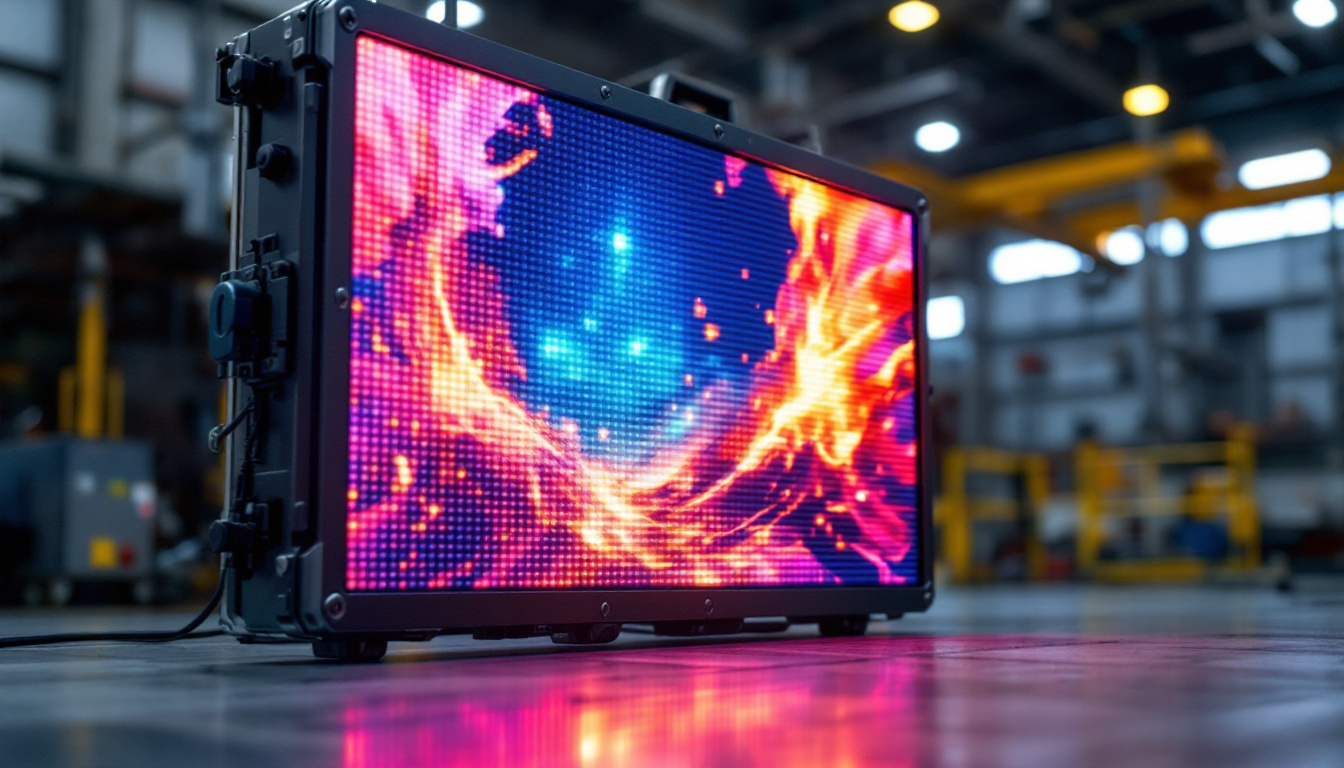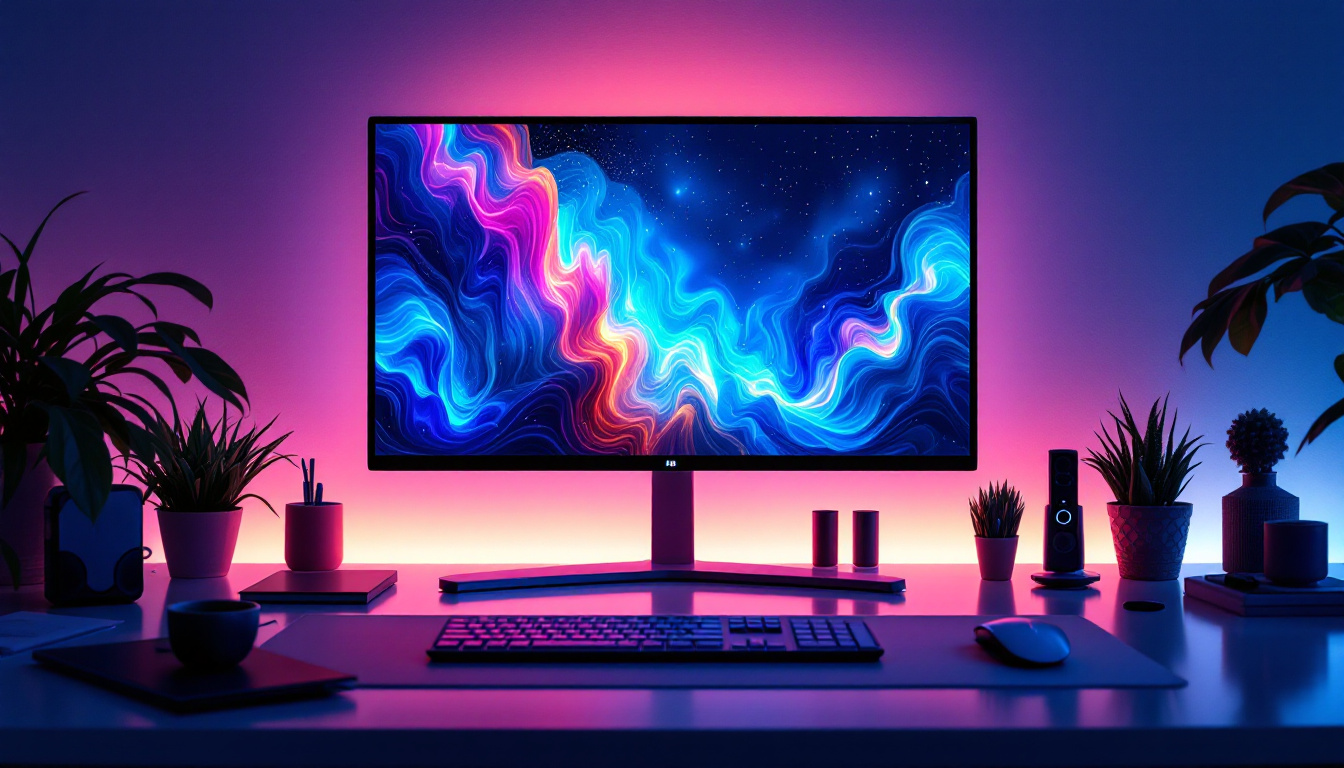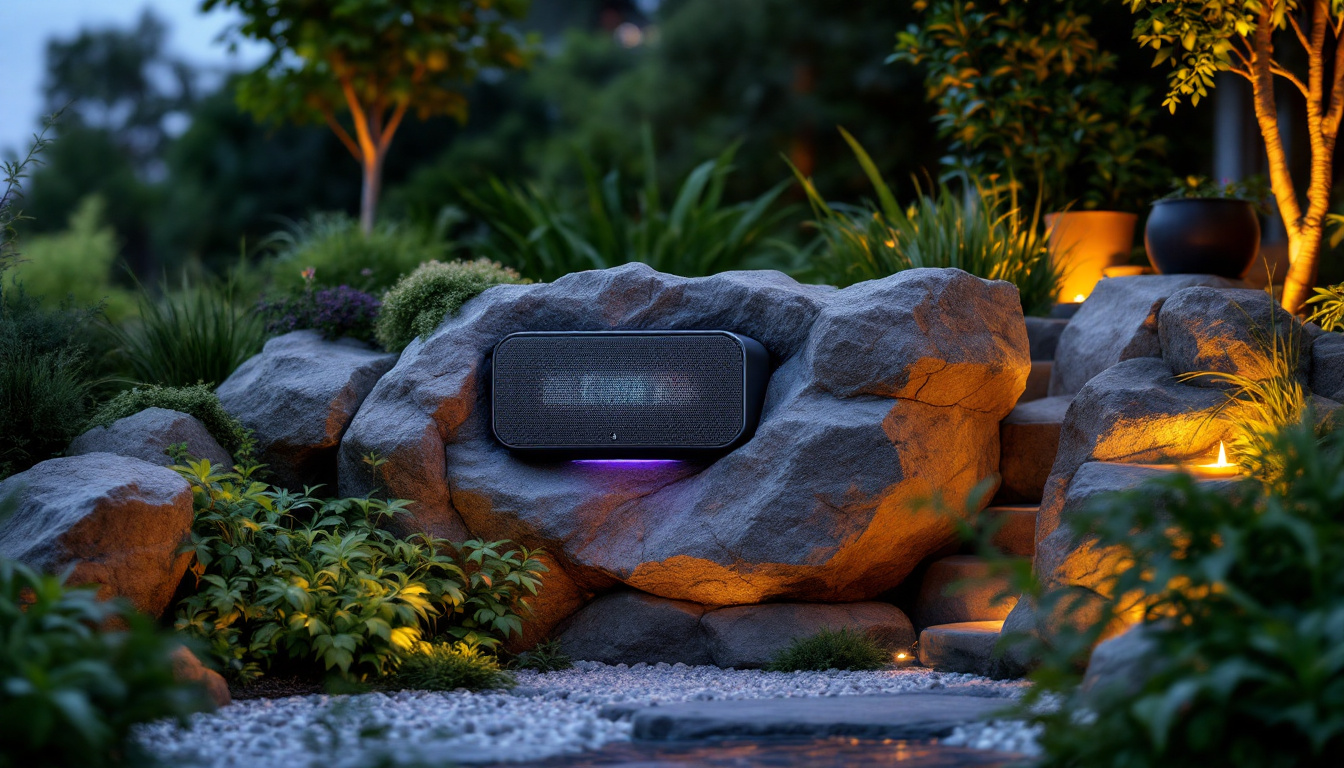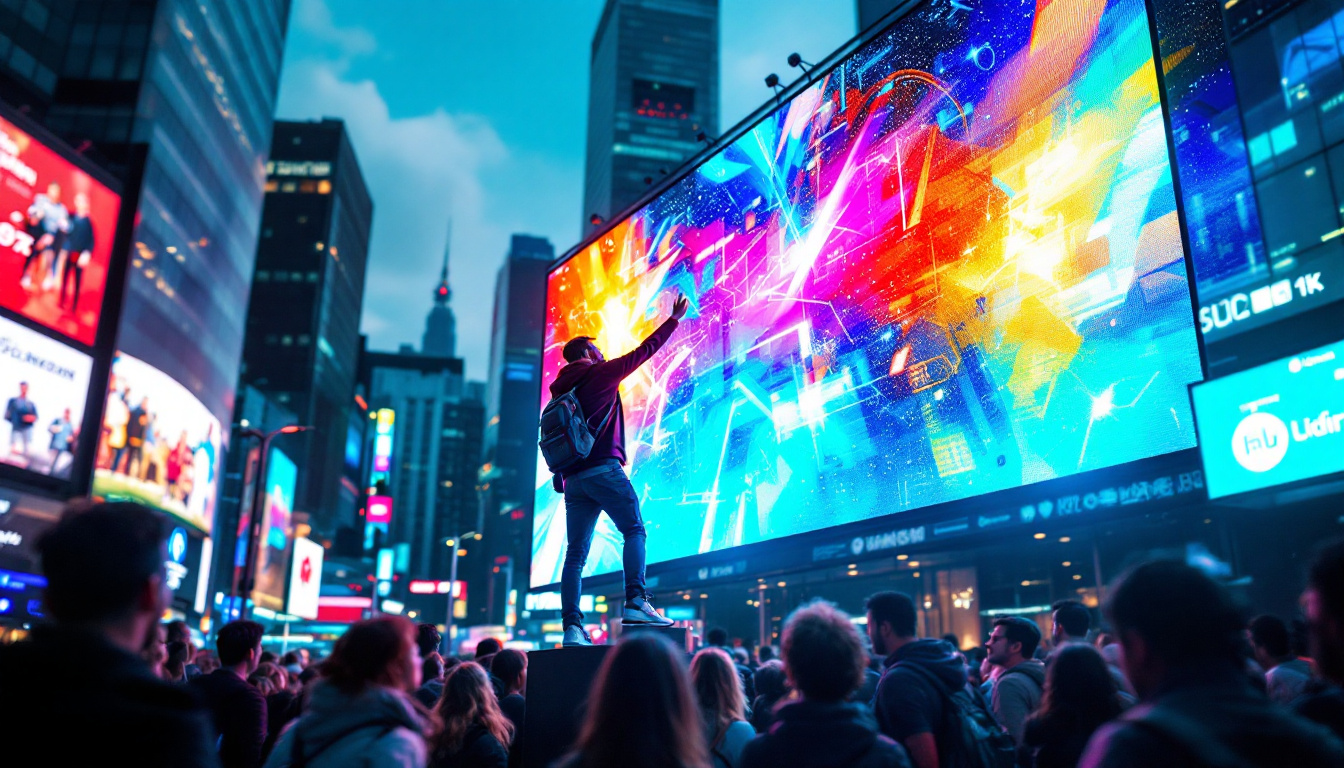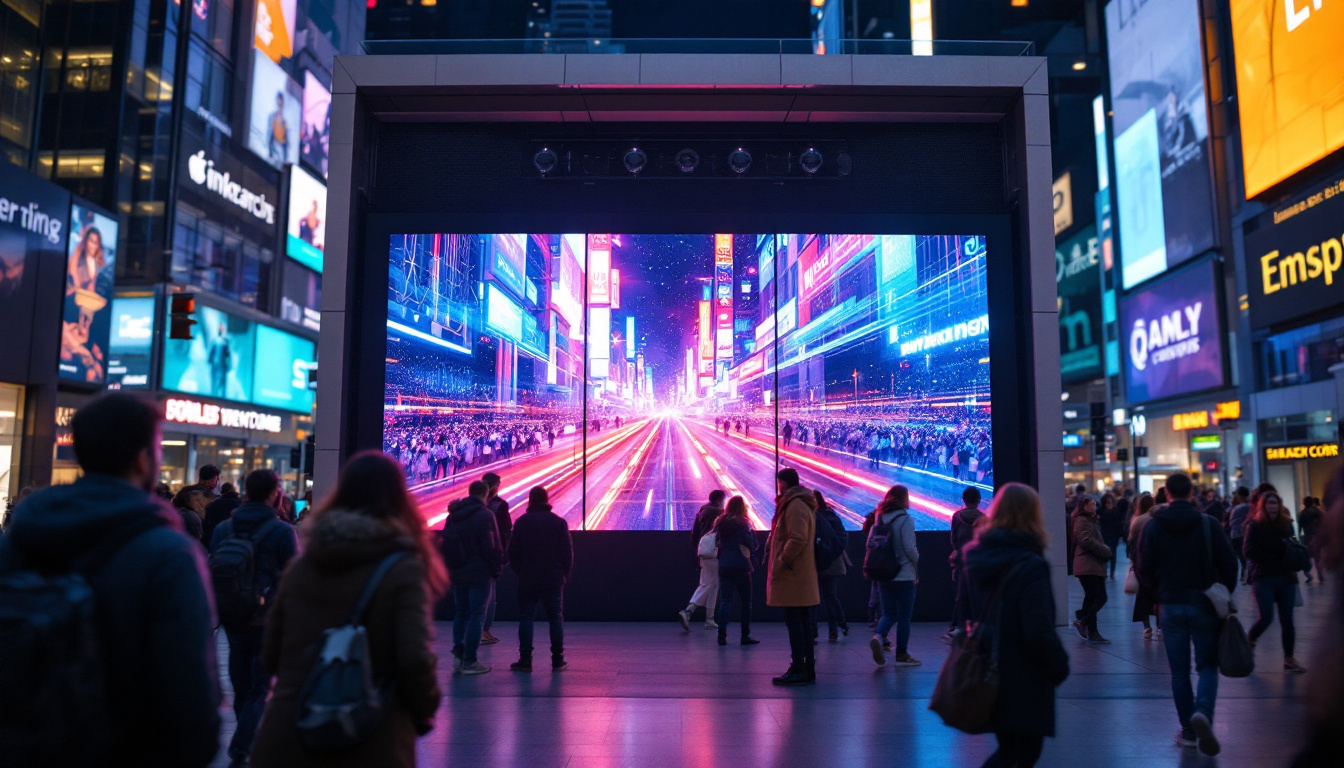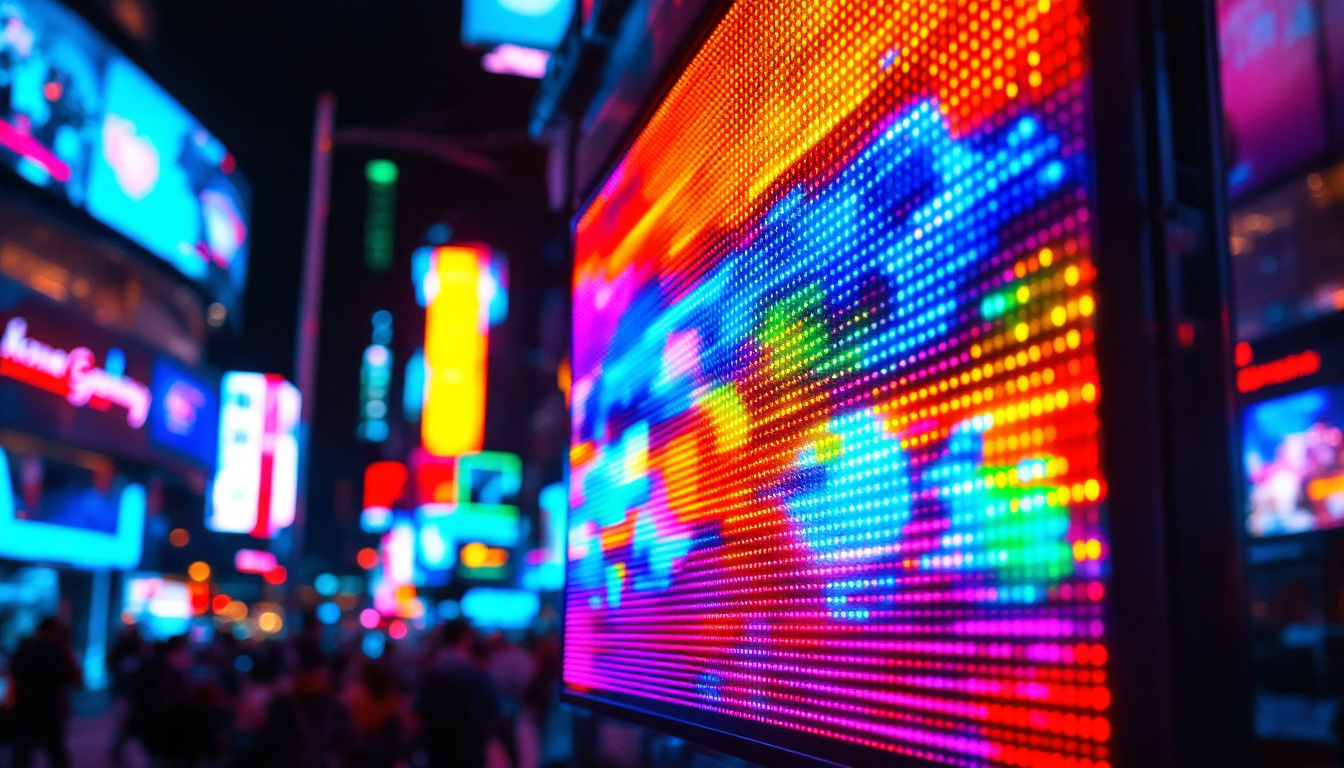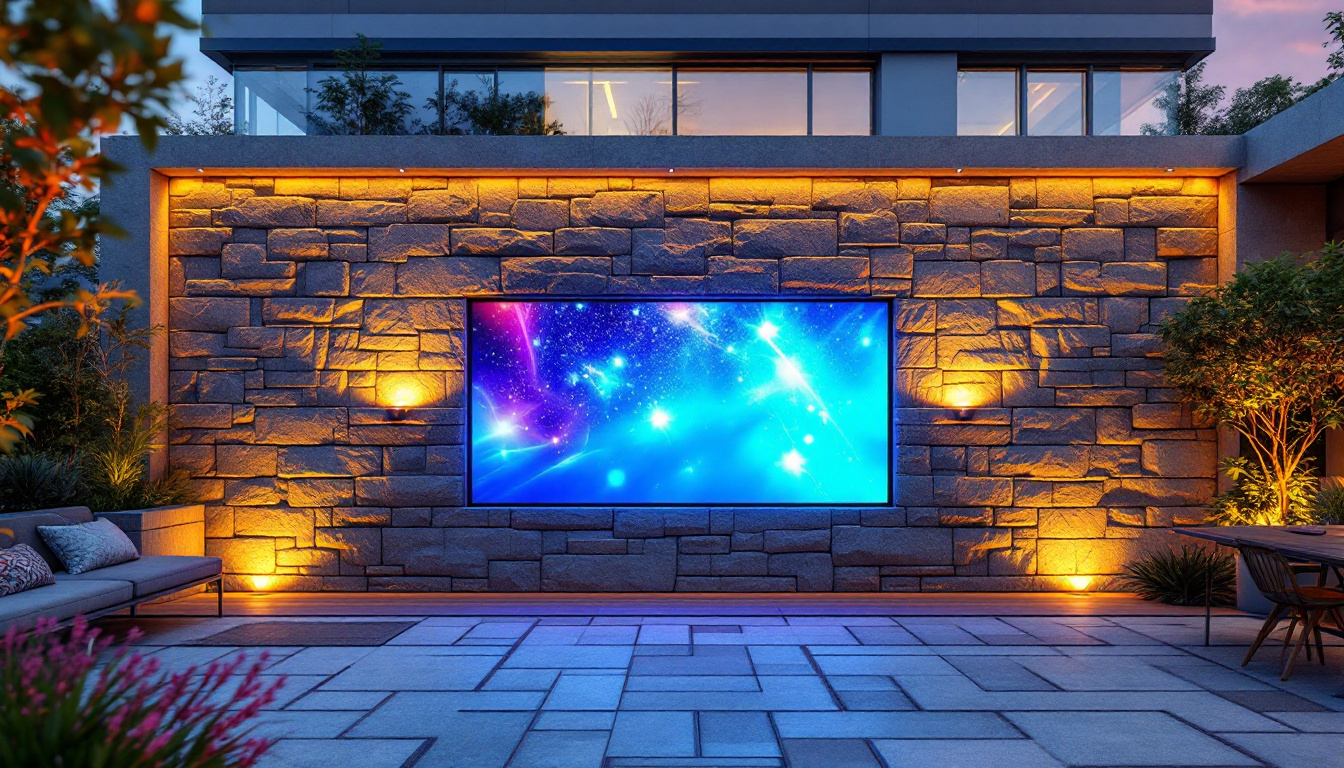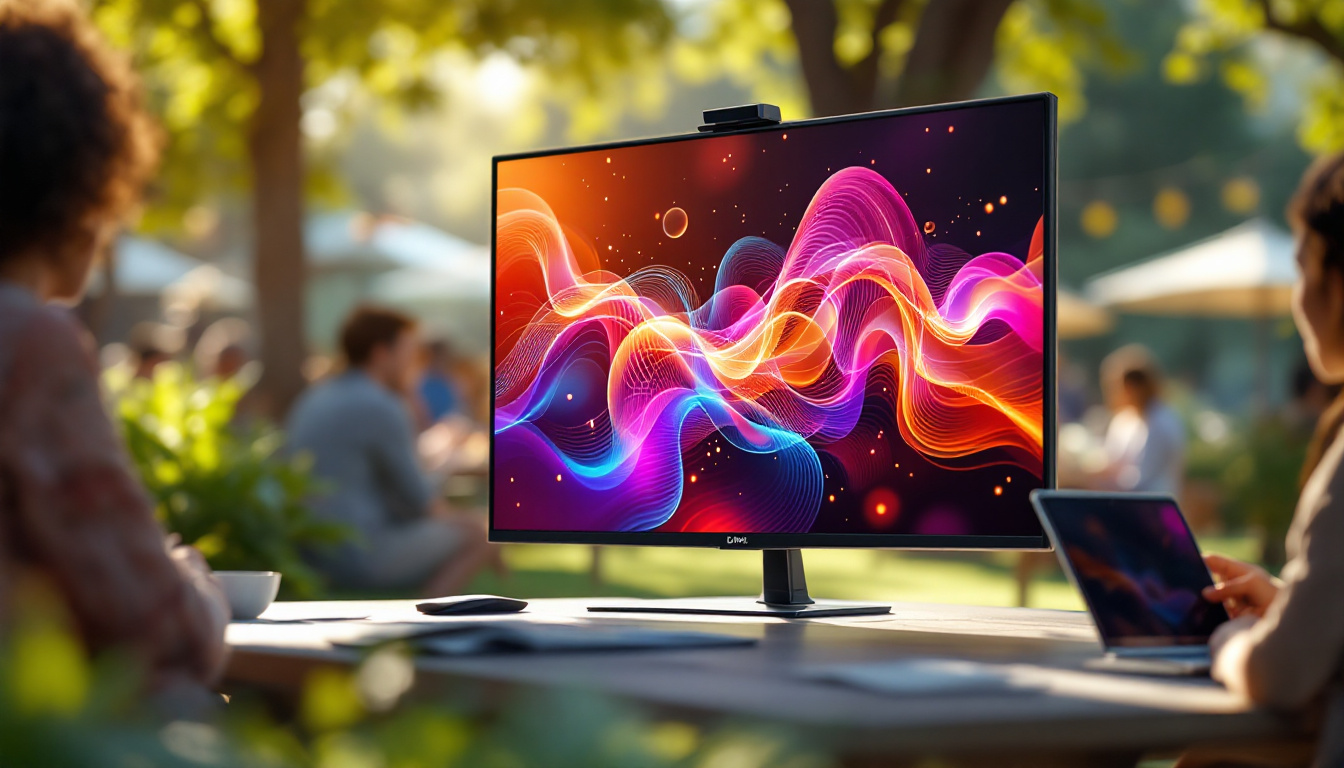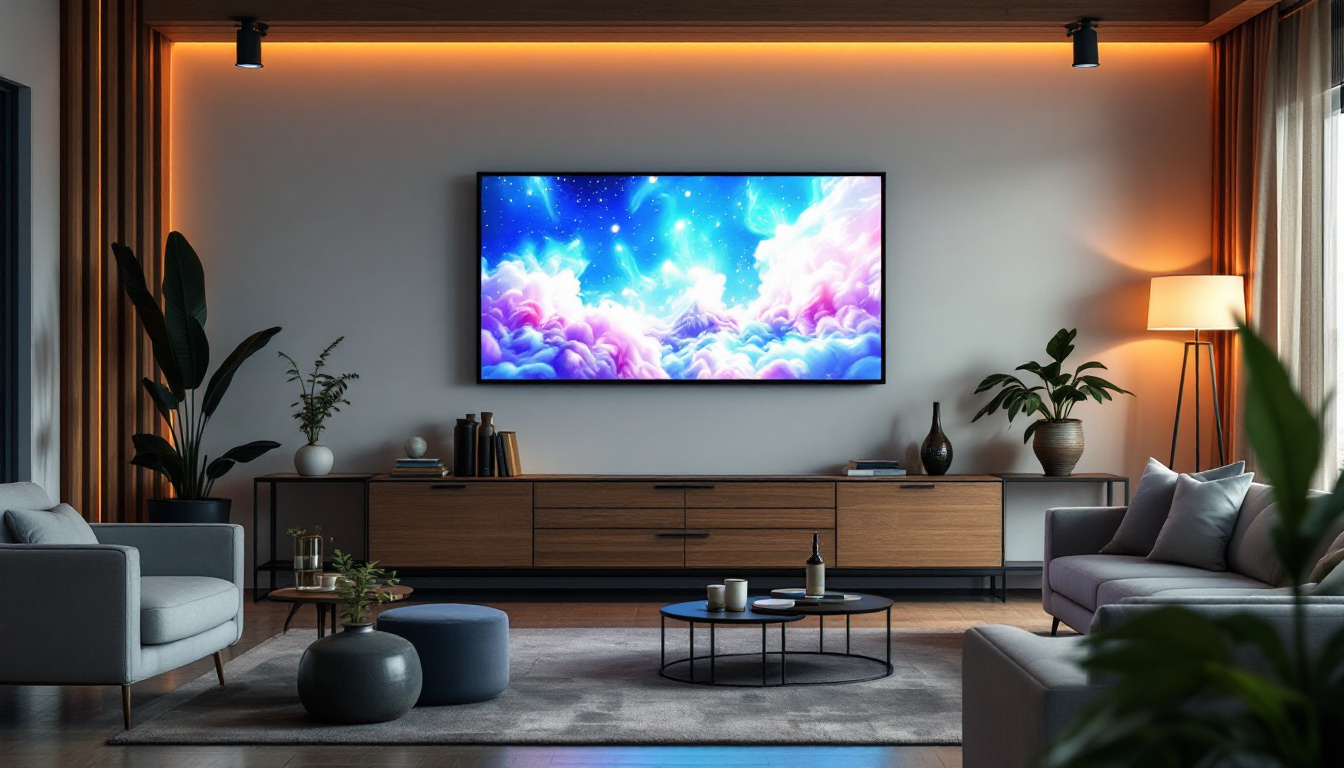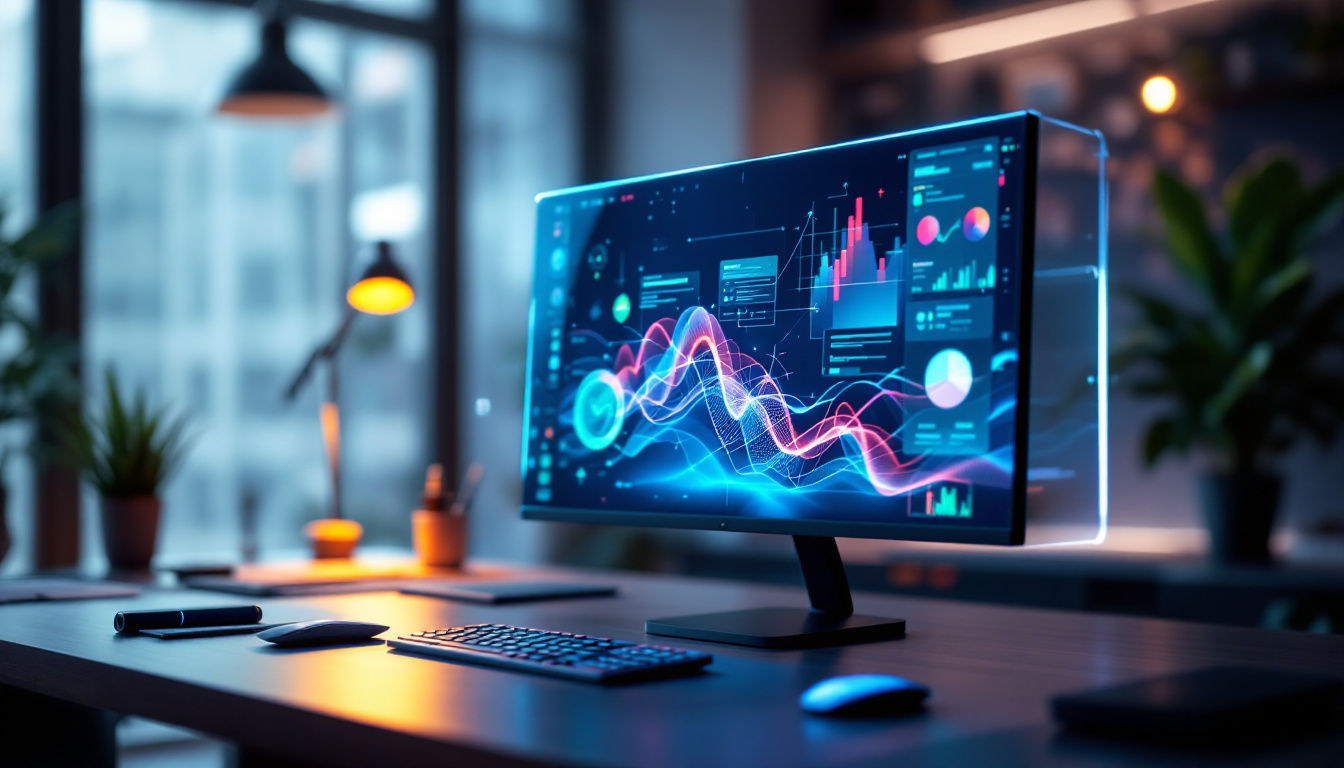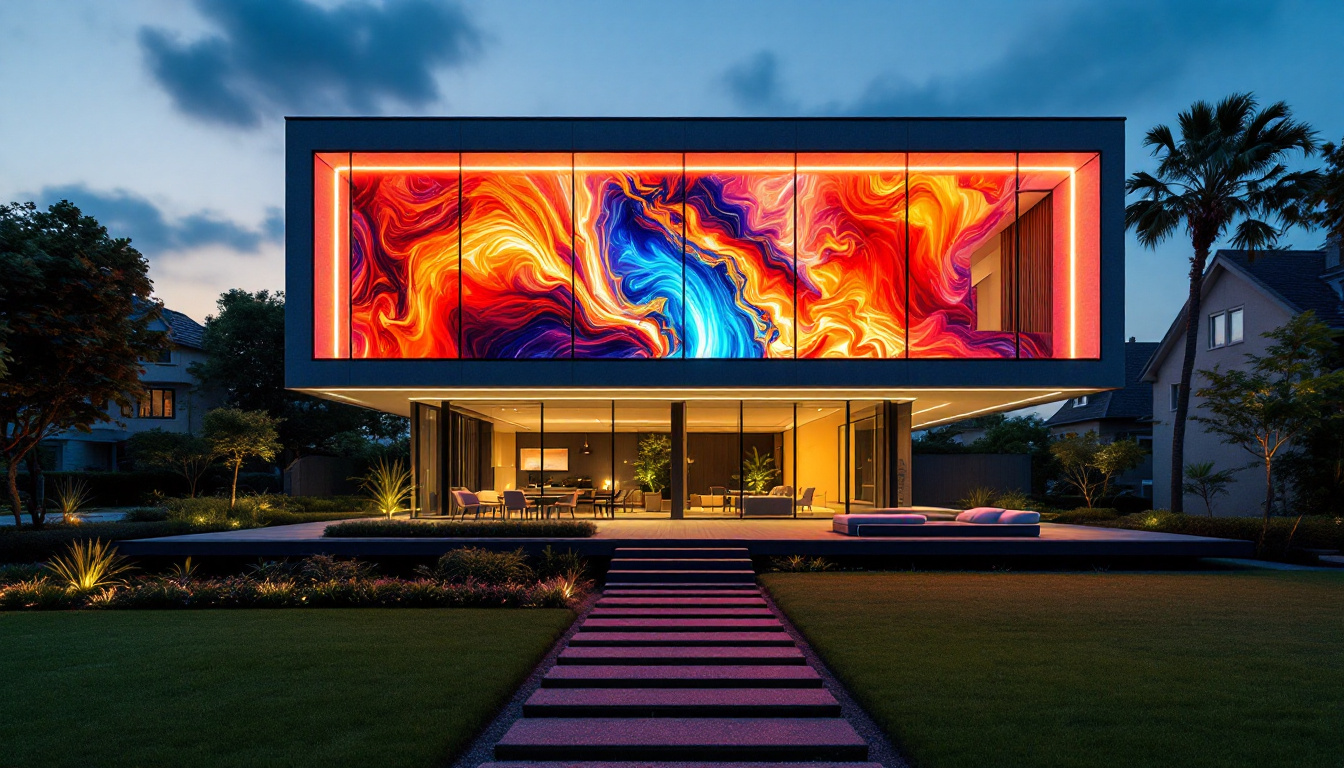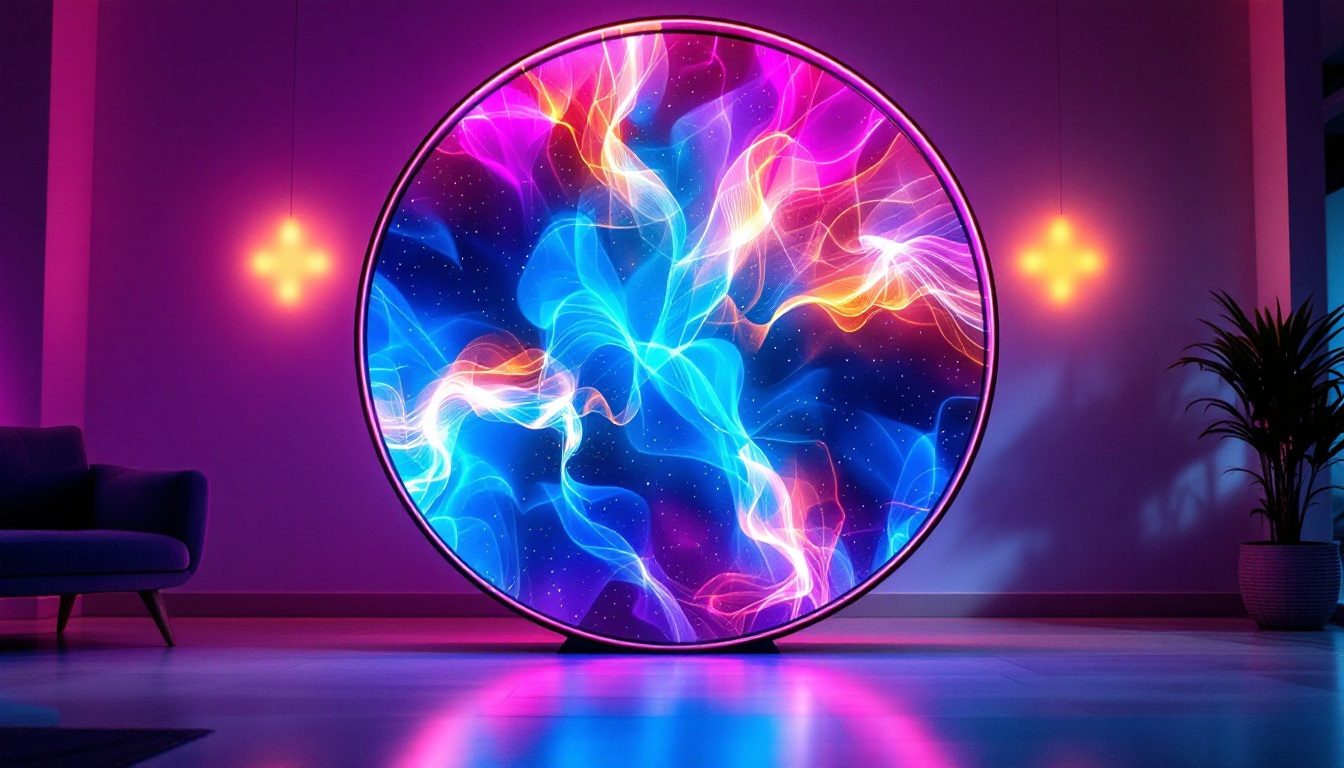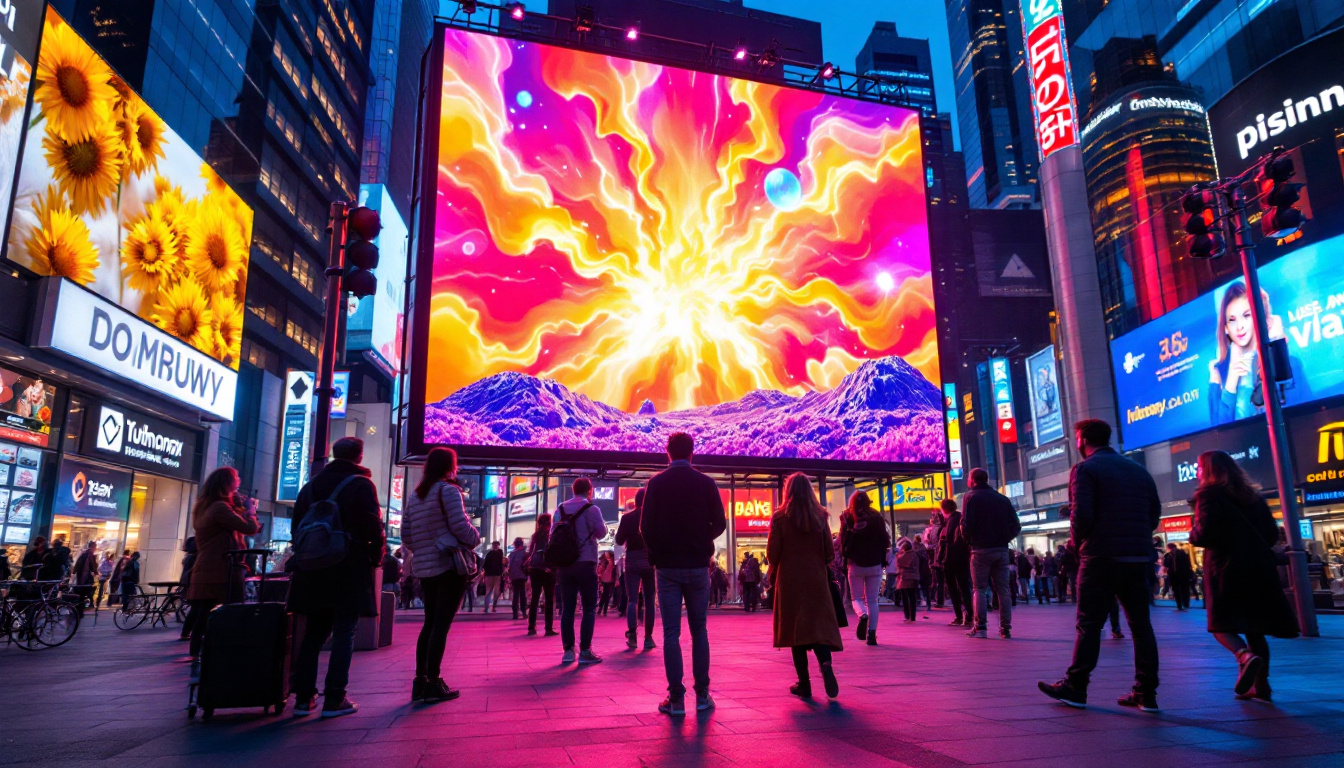In the world of digital displays, the contrast setting is a crucial aspect that can significantly affect the viewing experience. Whether for gaming, graphic design, or general use, understanding how to adjust and optimize the contrast on LED monitors can lead to a more enjoyable and productive experience. This article delves into the intricacies of monitor contrast settings, specifically focusing on LED displays.
Understanding Contrast in LED Displays
Contrast refers to the difference in luminance between the brightest white and the darkest black that a display can produce. In LED displays, this measurement plays a vital role in determining how vibrant and clear the images appear. A higher contrast ratio means that the display can show deeper blacks and brighter whites, which enhances the overall image quality. This distinction is particularly noticeable in high-definition content, where the subtleties of color and detail can significantly impact the viewing experience.
The Importance of Contrast Ratio
The contrast ratio is typically expressed as a ratio, such as 1000:1, indicating that the brightest white is 1000 times brighter than the darkest black. This ratio is essential for various applications. For instance, in graphic design, accurate color representation is crucial, and a higher contrast ratio can help in achieving that. In gaming, enhanced contrast can provide a competitive edge by making it easier to spot opponents in darker environments. Furthermore, in professional photography and videography, a high contrast ratio allows for better post-processing capabilities, enabling artists to manipulate images with greater precision and fidelity.
How LED Technology Affects Contrast
LED technology has advanced significantly, allowing for better contrast ratios compared to older display technologies like LCDs. The use of backlighting in LED displays enables deeper blacks, as the individual pixels can be turned off completely in certain areas, resulting in true black levels. This capability is particularly beneficial when watching movies or playing games that feature dark scenes. Moreover, advancements such as local dimming technology further enhance contrast by allowing specific zones of the screen to dim independently, creating a more dynamic range of brightness across the display. This innovation not only improves the visual experience but also contributes to energy efficiency, as less power is consumed when displaying darker images.
Additionally, the ambient light conditions in which a display is viewed can significantly influence perceived contrast. For example, a display with a high contrast ratio may still struggle to deliver optimal performance in brightly lit environments. Manufacturers have begun to address this challenge by incorporating anti-glare coatings and adaptive brightness features that adjust the display’s output based on surrounding light levels. This adaptability ensures that users can enjoy rich, vibrant visuals regardless of their viewing conditions, making LED displays a versatile choice for both home entertainment and professional applications.
Adjusting Contrast Settings
Most monitors come with built-in settings that allow users to adjust the contrast to their preference. However, finding the optimal setting can sometimes be challenging. Here are some tips on how to adjust the contrast effectively.
Using Monitor Controls
Most LED monitors have physical buttons or an on-screen display (OSD) menu that allows users to adjust various settings, including contrast. Accessing the OSD typically involves pressing a button on the monitor, which brings up a menu with different options. From here, users can navigate to the contrast setting and make adjustments.
When adjusting contrast, it is advisable to do so gradually. Making drastic changes can lead to unnatural colors or loss of detail in shadows and highlights. A good practice is to start with the default setting and make small adjustments while observing the changes in image quality. Additionally, it can be helpful to view a variety of content, such as images with different color schemes or videos with varying brightness levels, to better gauge how your adjustments affect overall visibility and detail.
Utilizing Calibration Tools
For those seeking a more precise adjustment, calibration tools can be invaluable. Software solutions and hardware calibration devices are available that can help achieve the best contrast settings based on specific viewing conditions and personal preferences. These tools often provide a series of tests and adjustments to ensure that the display is optimized for the best possible viewing experience.
Moreover, many professional photographers and graphic designers rely on these calibration tools to maintain color accuracy and consistency across their work. Some advanced calibration software even allows users to save multiple profiles for different tasks, such as gaming, photo editing, or watching movies, ensuring that the contrast settings are always tailored to the specific requirements of each activity. This level of customization not only enhances the visual experience but also helps in reducing eye strain during prolonged use, making it a worthwhile investment for anyone who spends significant time in front of a screen.
Optimal Contrast Settings for Different Uses
Different activities require different contrast settings for optimal performance. Understanding the best settings for specific tasks can enhance user experience significantly.
Gaming
In gaming, a higher contrast setting is often preferred, as it can enhance visibility in dark areas and make colors pop. Many gamers recommend settings around 70-80% contrast for a balanced experience. However, this can vary based on the game and personal preference. It’s essential to test different settings in various lighting conditions to find the most comfortable level. Moreover, many modern games feature dynamic lighting and shadow effects, which can greatly benefit from higher contrast settings. This allows players to spot enemies lurking in the shadows or notice subtle details in the environment that might otherwise go unnoticed. Additionally, some gaming monitors come with preset modes specifically designed for different genres, such as FPS or RPG, which can further aid in achieving the best visual experience.
Graphic Design and Photo Editing
For graphic designers and photographers, accuracy is key. A contrast setting that is too high can lead to loss of detail in shadows and highlights, while a setting that is too low can make images appear flat. Typically, a contrast setting between 50-70% is recommended for these tasks. Additionally, using calibration tools can help ensure that colors are represented accurately on the display. Professionals often invest in hardware calibrators that adjust not only contrast but also brightness and color temperature, ensuring that their work translates well across different devices. This is especially crucial in industries where color fidelity is paramount, such as fashion or product design, where the wrong shade can lead to costly mistakes. Furthermore, maintaining a consistent viewing environment, including ambient lighting and screen glare, can further enhance the accuracy of visual work.
General Use
For everyday tasks such as browsing the web, watching videos, or working on documents, a moderate contrast setting is usually sufficient. A setting around 60% often provides a good balance, ensuring that text is readable without causing eye strain. Again, personal comfort and the ambient lighting conditions should be taken into account when adjusting these settings. In addition, it’s worth noting that many operating systems and applications now include features that automatically adjust contrast based on the time of day or surrounding light levels. This can help reduce eye fatigue during extended periods of use, especially in low-light environments. Furthermore, users can benefit from incorporating breaks and employing the 20-20-20 rule—looking at something 20 feet away for 20 seconds every 20 minutes—to maintain eye health while using screens for general activities.
Common Issues with Contrast Settings
While adjusting contrast settings can greatly enhance the viewing experience, several common issues may arise. Understanding these can help users troubleshoot and find the best settings for their monitors.
Loss of Detail
One of the most common issues encountered is the loss of detail in either shadows or highlights. This can occur when the contrast is set too high, causing dark areas to appear as solid black and bright areas to lose their subtle variations. To avoid this, it’s crucial to make adjustments gradually and observe the changes carefully.
Color Distortion
Another issue that can arise from improper contrast settings is color distortion. When the contrast is set too high, colors may appear oversaturated or unnatural. This is particularly problematic for tasks requiring color accuracy, such as photo editing. A balanced contrast setting helps maintain the integrity of colors across the spectrum.
Advanced Contrast Techniques
For those looking to delve deeper into monitor settings, several advanced techniques can enhance the viewing experience even further.
Dynamic Contrast
Many modern monitors feature dynamic contrast settings, which automatically adjust the contrast based on the content being displayed. This technology can enhance the viewing experience by providing deeper blacks during dark scenes and brighter whites during lighter scenes. However, it can also lead to inconsistencies, so users should experiment with turning this feature on and off to see which setting they prefer.
Gamma Settings
Gamma settings control the brightness of mid-tones in an image. Adjusting gamma can complement contrast settings, allowing for a more tailored viewing experience. For example, increasing gamma can brighten dark scenes without affecting the overall contrast, making it easier to see details without losing depth.
Conclusion
Understanding and adjusting the contrast settings on LED displays is essential for optimizing the viewing experience, whether for gaming, professional work, or general use. By grasping the fundamentals of contrast, utilizing calibration tools, and being aware of common issues, users can significantly enhance their interaction with digital displays.
As technology continues to evolve, staying informed about the latest advancements in display technology will empower users to make the most of their monitors. With the right settings in place, the beauty of digital content can truly shine, providing a richer and more immersive experience.
Discover the Ultimate LED Display Experience with LumenMatrix
Ready to take your viewing experience to the next level? LumenMatrix is at the forefront of LED display innovation, offering a wide range of solutions tailored to meet your needs. From breathtaking Indoor LED Walls to dynamic Outdoor LED Displays, and from versatile Vehicle LED Displays to stunning LED Sports Displays, LumenMatrix has it all. Elevate your visual communication with our cutting-edge technology designed to captivate your audience and amplify your message. Don’t settle for less—check out LumenMatrix LED Display Solutions today and see the difference for yourself!

